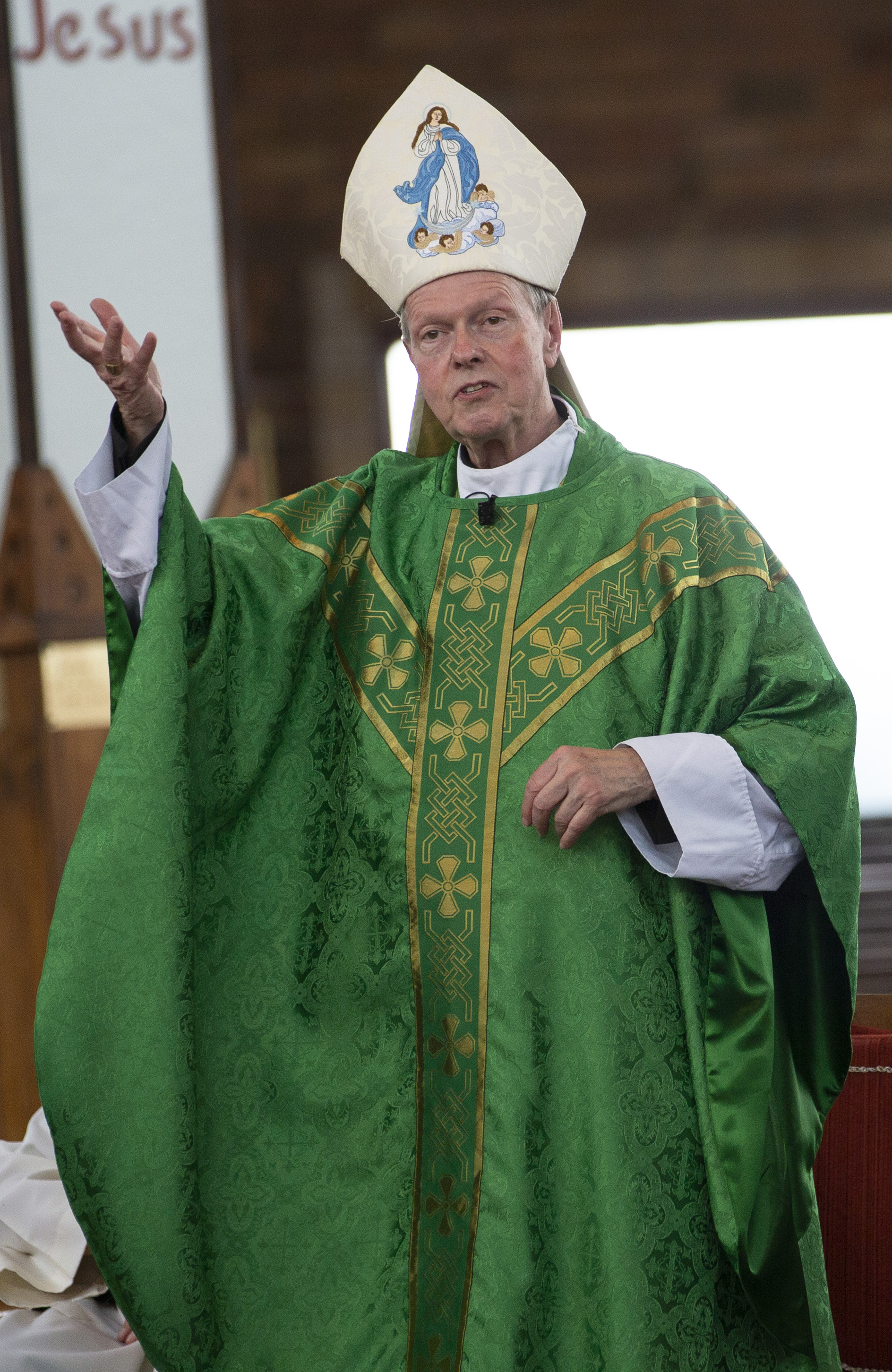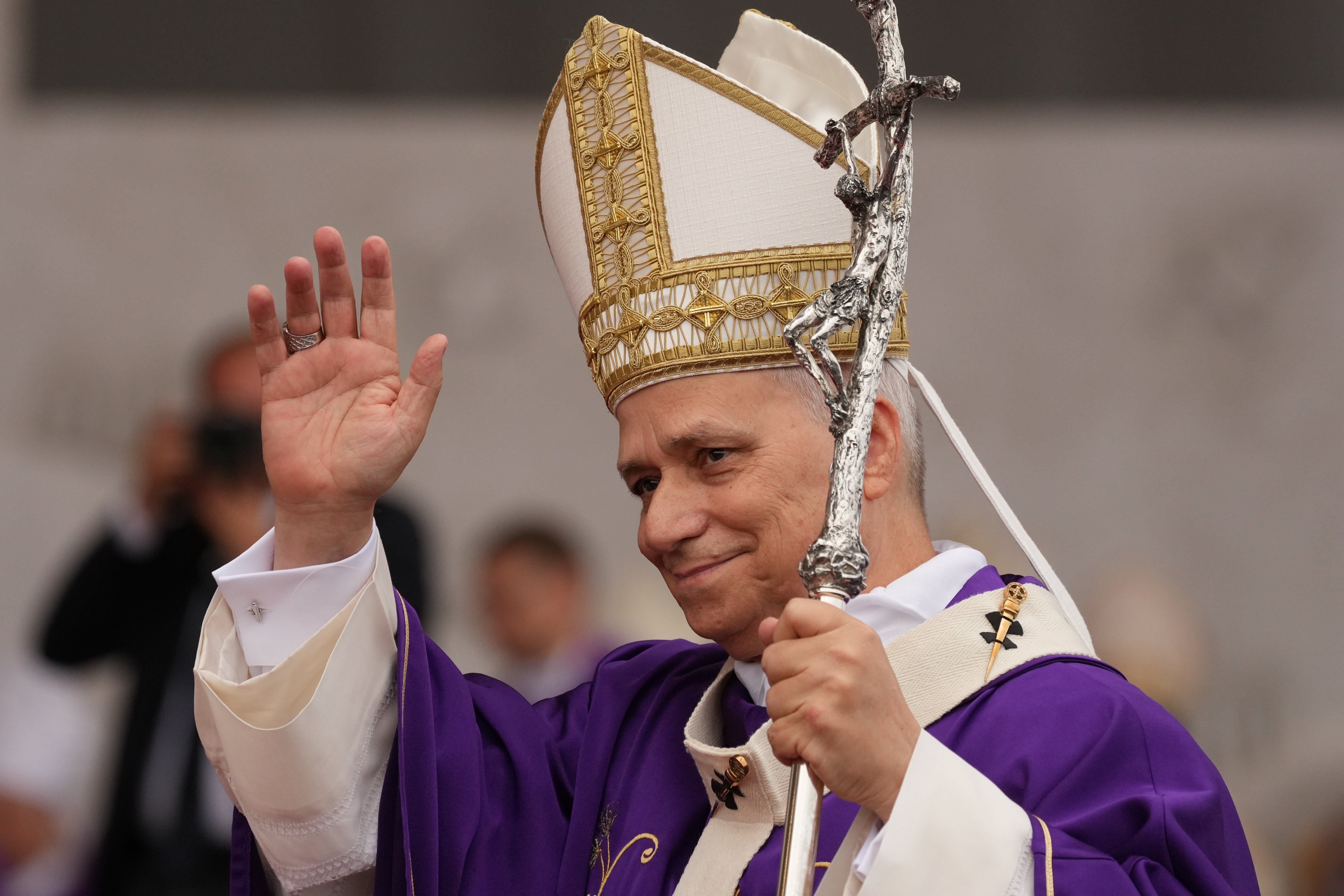November 5, 2019 at 8:48 p.m.
Fr. Dan Quinn, pastor of St. Paul the Apostle in Hancock, embarked on the Camino de Santiago in Spain, a walk of 500 miles from St. Jean-Pied-de-Port in the southwest of France, to the tomb of St. James, (“Santiago”), at Santiago de Compostela in northwest Spain. He started his journey on Aug. 29 and arrived on Oct. 2. Here is the first of his weekly remembrances:
For a thousand years, Christians have been making pilgrimages to the tomb of St. James in Santiago, as well as to the Holy Land and to the tombs of the apostles in Rome. As I embarked on this journey, I knew that I followed in a long line of pilgrims, starting with a Frenchman named Bretenaldo, the first recorded pilgrim to Santiago in 920, and included lay people and clergy from our Diocese who have walked it in recent years (and whom I consulted before deciding to undertake it). Additionally, saints such as St. Francis in 1213, St. Isabel, Queen of Portugal in 1325 and 1335, and St. Bridget of Sweden in 1341, had also made this pilgrimage.
To successfully reach St. James/Santiago’s tomb, I needed guides and rules. The Codex Calixtinus is the first book about the pilgrimage to Santiago, written in the 1100s. It is considered the first tourist’s guidebook, but it was a bit outdated for me. The book I decided on (“A Pilgrims Guide to the Camino de Santiago” by John Brierley) essentially did the same thing as the Codex, giving me practical advice as to where to sleep, which churches to visit, which foods to find and which to avoid, and what scams to be wary of. The other guides that helped me were the blue and yellow shells along the trail, the symbol of this pilgrimage, and the yellow arrows painted everywhere, pointing me in the right direction. Another thing that helped was speaking the language, and I have a leg up here thanks to the Spanish language training I received during priestly formation.
I also set some ground rules:
1. No technology. Or at least, very little. I had my phone, but it was on airplane mode. I also didn’t take many pictures. Photography is hard work: lighting, shadows, focus, composition, color … it’s too much! If I stopped for 15 minutes every time I wanted to take a photo, I would never reach the end.
2. There were many options for accommodations. My plan was to sleep first in a monastery, if available, and then at a parish-run albergue (pilgrim hostel), then a municipal albergue, then a privately-run one, and finally, if necessary, a hotel.
Not only are hotels more expensive, but staying at them would deprive me of the experience of camaraderie with other pilgrims. To go on a pilgrimage involves becoming part of a community. When people travel for business or vacation, the train stations, airports and roads are all filled with people going all sorts of different directions. But the Camino is a one-way road, with everyone journeying to the same destination. And so pilgrims help each other to get to that destination.
3. No cars, trains, buses, etc. If I got to the end, it would be under my own power. And anything I wanted to take with me I would have to carry.
4. Walk barefoot as often as possible.
Finally, there were a couple ecclesiastical requirements for pilgrims: “Having set their affairs in order, pilgrims prepare themselves with sacramental confession, assist at Mass and receive Holy Communion.” It was common that people taking this strenuous journey to a holy site and back again may get sick, injured or die. And there were many pilgrim cemeteries along the way. So, my will was on file at my uncle’s law office, I had my diocesan ID showing that I am a priest in good standing, I went to confession, and assisted at Mass and received communion, and now I was ready to go!
Day 1
I arrived yesterday by train into the French town of St. Jean-Pied-de-Port (“St. John at the foot of the pass”) at the base of the Pyrenees. I was aware, while disembarking, that this would be the last time I’d be in a motorized vehicle of any sort for the next 40 days. I received my pilgrim credential, got a scallop shell for hanging on the outside of my bag, found lodging and dinner at the parish-run hostel and purchased some rations for the walk and filled my water bottles. Then I attended the evening Mass and received the pilgrim’s blessing. I also helped to give it, as the French priest, knowing that there were many English-speaking pilgrims and that I was a priest, enlisted my help.
After a bite of breakfast (tea, bread and jam), I left just after 7 in the morning, with my shoes safely in my pack. At this time of year, there are about 200 people leaving each day from St. Jean. As I walked, I started learning names and where people were from. For some reason, people wanted to talk about my feet. The walk soon became steep, which made it difficult to talk. But no matter what, as I passed someone or someone passed me, I gave the customary pilgrim’s greeting: “¡Buen Camino!” The first time I said this, I felt like a fake pilgrim, because I had already met some pilgrims who began months or weeks ago, starting variously in Lourdes, Le Puy or from their house in Germany. How could I wish them a “Buen Camino,” or they me, given how much more they were going to do on this pilgrimage?
My first break came upon arriving in Orisson, which was just a restaurant and hostel on the side of the road. A real second breakfast was very welcome: tea, croissant, tortilla de patate (a staple in northern Spain), and fresh squeezed orange juice. After meeting more people and enjoying the break, and commiserating about the difficult path we had just walked, I continued on, up to the top of the mountain (mercifully a shallower climb), until I came upon a food truck. Here we pilgrims shared what we had either carried or just purchased from the food truck: sausage, cheese, hot drinks, cold drinks and fruit. Continuing on, I walked with some people with whom I had the same gait and who spoke the same language, and together we passed into Spain and began the descent to Roncesvalles, the large monastery and hostel for pilgrims founded around 1127 by King Alfonso I of Navarre.
After some rest and a shower, I enjoyed the pilgrim’s meal with a couple of Frenchmen and a guy from Northern Ireland. The conversation was slow due to the language barrier, but we were unified in our accomplishment and purpose at the end of this first day. The evening pilgrim’s Mass was very nice, and we all once again received the blessing of pilgrims. Curfew was 10 p.m.
Day 2
At 6 a.m. bright lights came on and music started blaring throughout the hostel. My feet and legs had barely recovered from the previous day, and the snoring in the dorm of 40 people ensured that I didn’t get the best rest. Shoes today: there’s too much gravel on the paths through the woods. I was handling the pavement, grass and dirt well, but the gravel and rocks are too sharp. I may have to break this rule more often than I had supposed.
Day 3
We arrived in Pamplona this afternoon, and upon connecting to Wi-Fi for the first time, learned that someone back at my parish had unexpectedly died. I know that Fr. Kelly will take good care of everything (he was the pastor there before and he knows most people better than I do), but I can’t help but feel that I should have been there. Thankfully, part of my responsibilities as pastor I can do wherever I am, and that is to pray for the people of my parish, even if I can’t pray with them. And I will especially take the next opportunity I have to offer Mass, and offer it for my deceased parishioner.
Day 5
Leaving Puente La Reina. This is what I get for walking with a group of Irish and English people: a lot of discussion of football (soccer), Brexit, Irish football, fairies, Church politics, national politics and more football. I’ve learned so much!
Day 7
I arrived in Logroño today, and I can’t believe it’s already been a week that I’ve been doing this. My 20-pound pack has already begun to feel lighter on my back, the Spanish is more easily coming out of my mouth, and the new daily routine that this pilgrimage imposes has set in. I guess the transition to this new normal has set in and I’m all ready to start my second week and to embark on whatever challenges the Camino has in store.
- Honor is ‘bigger than me,’ Heisman winner, a Catholic, says in emotional acceptance speech
- Illinois Catholic bishops back pregnancy centers’ suit over law requiring abortion referrals
- Haitian Catholics persevere with faith, courage amid adversity in US and in troubled homeland
- Attending school Christmas concert, pope thanks children for sharing love
- Trump, lawmakers call for Jimmy Lai’s release after ‘unjust conviction’
- Las Posadas Navideñas: Journeying to Bethlehem alongside the Holy Family
- Church beatifies 50 French Catholics killed ‘in hatred of the faith’ by German Nazis
- ‘Bio-fiction’ author blends history with quiet plea for redemption
- Chile’s bishops’ congratulate new Catholic president, ‘worry’ over anti-migrant attitudes
- Parishes clean up damage, help those displaced by floods in Western Washington state








Comments:
You must login to comment.